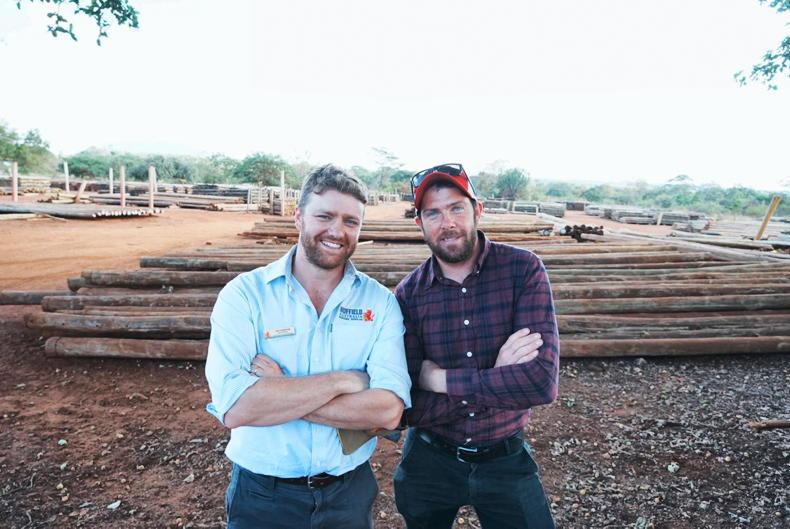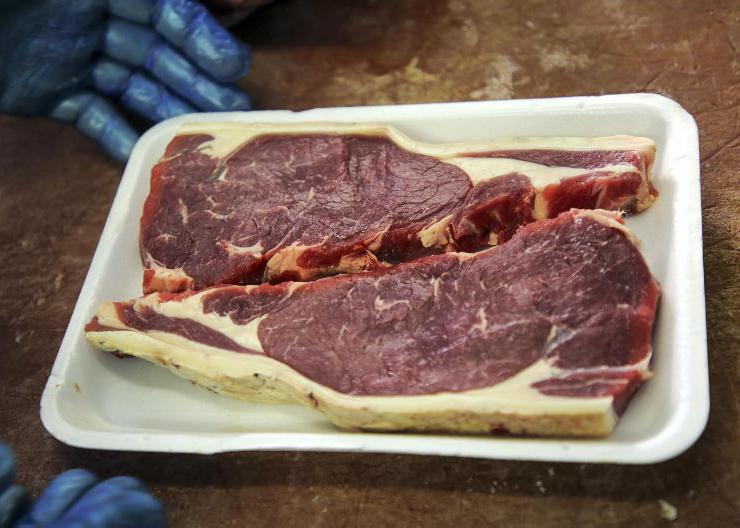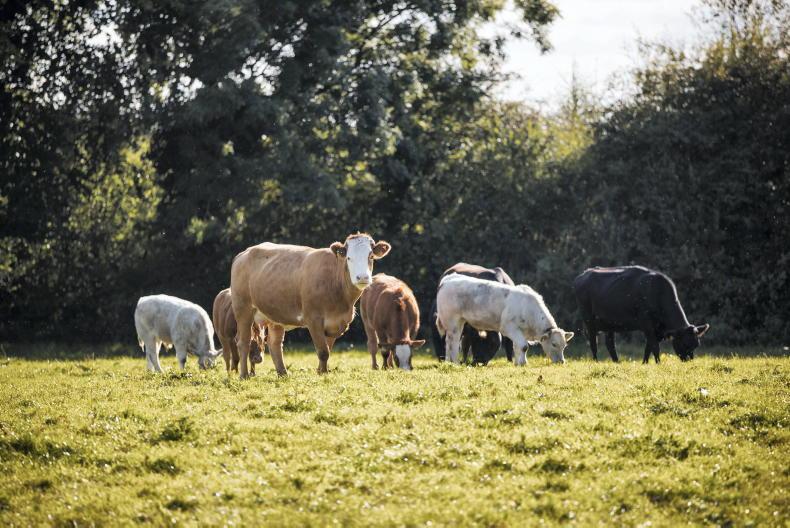Poor grass growth leading to an increased use of feed is the most common cause for the increase in costs of production experienced on Irish dairy farms in 2024.
While costs increased, the rate of increase has slowed dramatically compared to the last number of years.
Despite the increase in costs, milk prices and stock sales both increased in 2024 making it a quite profitable year. Teagasc analysis would put 2024 second to 2022 in terms of profitability.
While it may have been profitable, it wasn’t an easy year to farm with bad weather delaying turnout in the spring and low grass growth rates during most of the summer and early autumn, meaning farmers had to feed silage and other feeds, increasing the workload. In other words: the profit was hard earned.
To examine costs in more detail, the Irish Farmers Journal has put together the costs for three top discussion groups based in the Munster region.
These costs just give a snapshot of the average costs of production on about 70 high-performing, larger-scale grass-based dairy farms that have over 300 cows on average. The breakdown of the variable and fixed costs for these groups is outlined in Table 1.
In Table 2, we have the corresponding numbers for the early release of the Teagasc Profit Monitor results from 2024.
This group of farmers is smaller at 150 cows but is still larger than the national average. This is not the final tally for the Profit Monitor group as there are still farmers to submit the costs data for 2024.
It’s fair to say that both the farmers that contributed to Table 1 and Table 2 are operating at a high level of technical performance – probably in the top 10% – so it’s not a reflection of the costs nationally. Instead, it’s a look at the costs on the best farms.
Main costs
The costs are presented in euro per kilo of milk solids (€/kg MS) instead of c/l as milk solids is a more accurate way of valuing output than litres. This is because the price per litre fluctuates so much depending on the fat and protein content of the milk. Essentially, the total cost for each item in the table is divided by the total kg of milk solids sold off the farm to work out the cost per kg of milk solids.
The first thing to note here is that own or unpaid labour is not included in either set of costs. Quantifying this cost is difficult as it’s very much scale dependent. For example, a farmer with 100 cows delivering 45,000kg MS annually and paying themselves €45,000 a year will have an own labour charge of €1/kg MS. Whereas a farmer with 300 cows and doing 135,000kg MS annually will have an own labour charge of €0.33/kg MS if they’re paying themselves the same €45,000 annually.
It’s no secret, grass growth rates have been declining since 2021
Based on the data in Tables 1 and 2, by far the biggest cost on farms is feed, with €0.88/kg MS and €1.04/kg MS spent on feed in both the discussion groups and Profit Monitor respectively. This is between 60% and 70% higher than the corresponding figure in 2021 and is as a result of higher costs per tonne and more tonnes being purchased.
Feed costs also include purchased forage and straights such as palm kernel which were widely used to stretch grass supply in 2024. It’s no secret, grass growth rates have been declining since 2021 while stocking rates have remained static so feed use has increased.
Labour is the second-biggest cost among the discussion group members in Table 1, coming in at €0.74/kg MS. Labour costs are much lower in the Profit Monitor data as the farms are smaller with less employed labour and more own labour, which is excluded from both sets of data.
With auto-enrolment for pensions and an increase in the minimum wage, labour costs are set to increase further in 2025.
Contractor
The next-biggest cost in both sets of data is contractor, coming in at €0.49/kg MS in Table 1 and €0.44/kg MS in Table 2. Go back three or four years ago, this figure would have been around €0.35/kg MS meaning it has increased by around 40% over that time.
The increase is as a result of the increased cost of buying machinery, labour, tractor fuel and tractor servicing costs plus the likely increase in contractor use on farms over the years.
The net result is that while contractor would have been a mid-ranking expense a few years ago, its now one of the biggest costs, surpassing fertiliser as an expense.
Land lease
For the larger farmers in Table 1, land leasing is a big cost, coming in at €0.40/kg MS in 2024 while it is almost half that at €0.25/kg MS on the Profit Monitor farms. Larger farms have more leased land and so it’s a bigger cost.
The next-biggest cost among the discussion group members is fertiliser at €0.37/kg MS.
Back when fertiliser prices peaked in 2022, fertiliser was coming in at over €0.54/kg MS so it has reduced in price considerably since then. However, so too have the rates being applied, if not for nitrogen certainly for phosphorus and potash.
This is worrying given where soil fertility is nationally. Phosphorus (P) fertiliser sales in 2023/2024 were back over 36% compared to the years 2020/2021.
The fertiliser register has tightened up the availability of P fertiliser. However, looking at it in the context of decreasing grass growth, neglecting P could be one of the biggest costs.
Heifer-rearing costs come in at €0.32/kg MS in Table 1. This includes the cost of milk replacer, meal for calves and contract rearing where relevant.
Where contract rearing is not practiced, we tend to see higher land lease and labour costs as one offsets the other.
Some farmers are questioning the value of contract rearing as costs have gone up considerably over the last few years as a result of higher labour, inputs and land charges for contract rearers.
Total costs of production among the discussion groups is €4.58/kg MS while it is lower among the Profit Monitor participants at €4.42/kg MS, the main difference being land and labour costs.
What we haven’t looked at is gross output and profit. Between milk and stock sales gross output in 2024 was about €6.80/kg MS across the board which leaves a net profit of between €2.20 and €2.40/kg MS depending on Table 1 or 2.
Again, this is before own labour, capital repayments, tax and re-investment in the business and this is from the best farms, not the average.
Table 1 shows the average costs of production for three large scale discussion groups while Table 2 shows the provisional results from farmers that participate in Teagasc Profit Monitor. Biggest cost on dairy farms is feed costs, followed by labour, contractor and land lease costs. Fertiliser costs have decreased from 2022 levels but the amount of P fertiliser being applied has fallen by over 36%.
Poor grass growth leading to an increased use of feed is the most common cause for the increase in costs of production experienced on Irish dairy farms in 2024.
While costs increased, the rate of increase has slowed dramatically compared to the last number of years.
Despite the increase in costs, milk prices and stock sales both increased in 2024 making it a quite profitable year. Teagasc analysis would put 2024 second to 2022 in terms of profitability.
While it may have been profitable, it wasn’t an easy year to farm with bad weather delaying turnout in the spring and low grass growth rates during most of the summer and early autumn, meaning farmers had to feed silage and other feeds, increasing the workload. In other words: the profit was hard earned.
To examine costs in more detail, the Irish Farmers Journal has put together the costs for three top discussion groups based in the Munster region.
These costs just give a snapshot of the average costs of production on about 70 high-performing, larger-scale grass-based dairy farms that have over 300 cows on average. The breakdown of the variable and fixed costs for these groups is outlined in Table 1.
In Table 2, we have the corresponding numbers for the early release of the Teagasc Profit Monitor results from 2024.
This group of farmers is smaller at 150 cows but is still larger than the national average. This is not the final tally for the Profit Monitor group as there are still farmers to submit the costs data for 2024.
It’s fair to say that both the farmers that contributed to Table 1 and Table 2 are operating at a high level of technical performance – probably in the top 10% – so it’s not a reflection of the costs nationally. Instead, it’s a look at the costs on the best farms.
Main costs
The costs are presented in euro per kilo of milk solids (€/kg MS) instead of c/l as milk solids is a more accurate way of valuing output than litres. This is because the price per litre fluctuates so much depending on the fat and protein content of the milk. Essentially, the total cost for each item in the table is divided by the total kg of milk solids sold off the farm to work out the cost per kg of milk solids.
The first thing to note here is that own or unpaid labour is not included in either set of costs. Quantifying this cost is difficult as it’s very much scale dependent. For example, a farmer with 100 cows delivering 45,000kg MS annually and paying themselves €45,000 a year will have an own labour charge of €1/kg MS. Whereas a farmer with 300 cows and doing 135,000kg MS annually will have an own labour charge of €0.33/kg MS if they’re paying themselves the same €45,000 annually.
It’s no secret, grass growth rates have been declining since 2021
Based on the data in Tables 1 and 2, by far the biggest cost on farms is feed, with €0.88/kg MS and €1.04/kg MS spent on feed in both the discussion groups and Profit Monitor respectively. This is between 60% and 70% higher than the corresponding figure in 2021 and is as a result of higher costs per tonne and more tonnes being purchased.
Feed costs also include purchased forage and straights such as palm kernel which were widely used to stretch grass supply in 2024. It’s no secret, grass growth rates have been declining since 2021 while stocking rates have remained static so feed use has increased.
Labour is the second-biggest cost among the discussion group members in Table 1, coming in at €0.74/kg MS. Labour costs are much lower in the Profit Monitor data as the farms are smaller with less employed labour and more own labour, which is excluded from both sets of data.
With auto-enrolment for pensions and an increase in the minimum wage, labour costs are set to increase further in 2025.
Contractor
The next-biggest cost in both sets of data is contractor, coming in at €0.49/kg MS in Table 1 and €0.44/kg MS in Table 2. Go back three or four years ago, this figure would have been around €0.35/kg MS meaning it has increased by around 40% over that time.
The increase is as a result of the increased cost of buying machinery, labour, tractor fuel and tractor servicing costs plus the likely increase in contractor use on farms over the years.
The net result is that while contractor would have been a mid-ranking expense a few years ago, its now one of the biggest costs, surpassing fertiliser as an expense.
Land lease
For the larger farmers in Table 1, land leasing is a big cost, coming in at €0.40/kg MS in 2024 while it is almost half that at €0.25/kg MS on the Profit Monitor farms. Larger farms have more leased land and so it’s a bigger cost.
The next-biggest cost among the discussion group members is fertiliser at €0.37/kg MS.
Back when fertiliser prices peaked in 2022, fertiliser was coming in at over €0.54/kg MS so it has reduced in price considerably since then. However, so too have the rates being applied, if not for nitrogen certainly for phosphorus and potash.
This is worrying given where soil fertility is nationally. Phosphorus (P) fertiliser sales in 2023/2024 were back over 36% compared to the years 2020/2021.
The fertiliser register has tightened up the availability of P fertiliser. However, looking at it in the context of decreasing grass growth, neglecting P could be one of the biggest costs.
Heifer-rearing costs come in at €0.32/kg MS in Table 1. This includes the cost of milk replacer, meal for calves and contract rearing where relevant.
Where contract rearing is not practiced, we tend to see higher land lease and labour costs as one offsets the other.
Some farmers are questioning the value of contract rearing as costs have gone up considerably over the last few years as a result of higher labour, inputs and land charges for contract rearers.
Total costs of production among the discussion groups is €4.58/kg MS while it is lower among the Profit Monitor participants at €4.42/kg MS, the main difference being land and labour costs.
What we haven’t looked at is gross output and profit. Between milk and stock sales gross output in 2024 was about €6.80/kg MS across the board which leaves a net profit of between €2.20 and €2.40/kg MS depending on Table 1 or 2.
Again, this is before own labour, capital repayments, tax and re-investment in the business and this is from the best farms, not the average.
Table 1 shows the average costs of production for three large scale discussion groups while Table 2 shows the provisional results from farmers that participate in Teagasc Profit Monitor. Biggest cost on dairy farms is feed costs, followed by labour, contractor and land lease costs. Fertiliser costs have decreased from 2022 levels but the amount of P fertiliser being applied has fallen by over 36%. 









SHARING OPTIONS